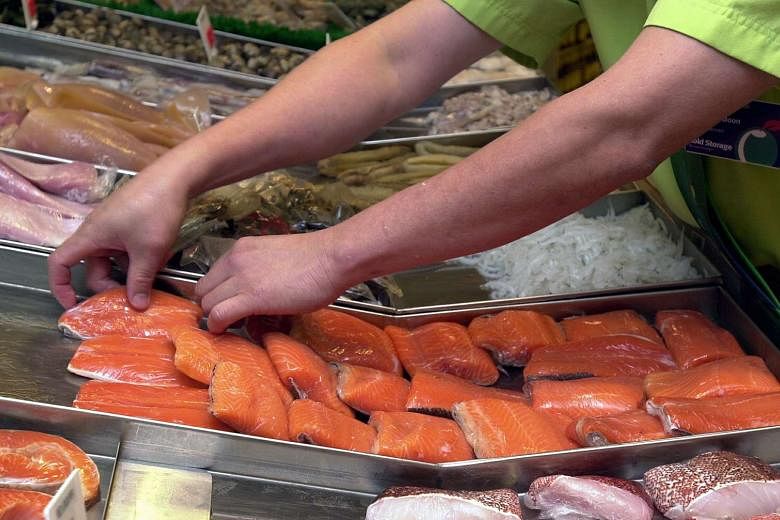UNITED STATES (THE WASHINGTON POST) - The bad news is you may have to cut back on how much salmon you eat. The good news is when you find out the gross reason why, you might not have much of an appetite anyway.
Salmon farms in Norway and Scotland, two of the world's largest exporters, have been decimated by sea lice, a parasite that has feasted on the blood and skin of salmon for millennia. Farther south in Chile, a toxic algae bloom has killed enough of the fish to fill several Olympic swimming pools.
As the salmon die by the millions, it's causing a supply-and-demand ripple effect that's reaching deep into American wallets.
Worldwide farmed salmon production fell by 8.7 per cent in a year, according to the Financial Times. And the Nasdaq Salmon Index showed a nearly 15 per cent jump in salmon prices in the last three months.
In the near future, it only promises to get worse. And the dying fish and rising prices could fan the debate about whether growing salmon in giant ocean farms is sustainable.
For fans of salmon nigiri or frozen fillets plucked from supermarket freezers for quick, heart-healthy protein, expect salmon portions to shrink - and prices to grow, experts say.
For salmon lovers, it could not have happened at a worse time. Diners have gravitated to the health benefits of the fish, and supermarkets have capitalised by producing cheap fillets. Consumption has grown by 12 per cent since 2002 and shows no signs of abating.
Salmon farms, which have raised safety standards, can fill that growing salmon craving - and keep prices down. The problem is, sea lice love chomping on salmon too.
In late 2016, an attack of sea lice took out 6 per cent of the population in Norway, the world's leading salmon producer, the Financial Times reported.
Salmon grown in large farms like Norway's are especially susceptible to sea lice, which are an increasing menace to anyone trying to make a living farming fish.
When the practice gained traction, scientists initially worried that farmed fish would break free a la "Finding Nemo" and out-compete species of wild salmon, according to the Alaska Department of Fish and Game. But what happened instead is that sea lice saw the giant pens of salmon as a giant seafood buffet.
And because sea lice can survive up to three weeks without being attached to a host, they're also a threat to wild salmon populations.
That added to the stigma of salmon farms, The Washington Post's Tamar Haspel wrote.
"When the industry was new, salmon farms were accused of polluting the oceans, spreading sea lice, fostering disease, allowing escapees and depleting the stocks of forage fish, up to seven pounds of which went into each pound of farmed Atlantic salmon," Haspel wrote in the 2013 piece. "All of those accusations were true in some locales, and some were true in all."
Seeing the concerns as a threat to the industry, fish farmers beefed up their standards, especially when it came to using chemicals to kill parasites like sea lice. Slowly, fish farming gained acceptance.
But the sea lice weren't done, Haspel wrote: "A bigger problem is that the sea lice, which can be fatal to salmon, are beginning to show resistance." Salmon to the south are dealing with their own problems.
A bloom of toxic algae - likely caused by warmer-than-normal sea temperatures - affected 38 salmon farms in Chile's main growing region, killing 23.8 million fish, enough to fill 14 swimming pools, the Financial Times reported.
That's a roughly 25 per cent decrease in salmon production in Chile, which ships most of its salmon north to the United States.
So maybe it's time to cultivate a taste for cod or haddock?"We're expecting the price to remain high for the rest of this year, simply because of the time it takes for young fish to grow to the size that chefs want," Rachel Dobson told the Financial Times. Dobson is managing director of Lynx Purchasing, a British catering and food service buying specialist.

